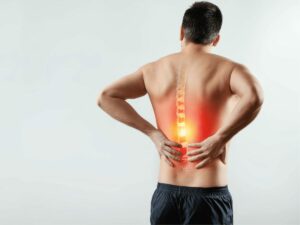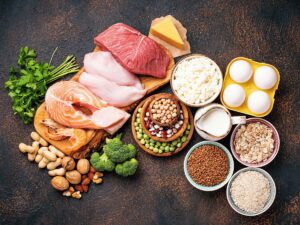Ever paused for a while and thought about how the synergy between nutritional therapy and HBOT can elevate treatment? These two combine to form a potent therapeutic alliance, enhancing health restoration.
As experts in hyperbaric solutions, we understand the complexities and benefits of integrated care strategies that include HBOT and nutritional support.
The integration of nutritional therapy with HBOT is about adding synergistically enhancing each therapy’s efficacy. This approach can significantly improve patient outcomes.
In this guide, we will discover how nutritional therapy complements HBOT, the science behind their interaction, and practical tips for implementing these strategies in your practice.
Keep reading to unlock the full potential!
1. Overview Of Nutritional Therapy and HBOT
Nutritional therapy focuses on optimizing health through personalized diets and nutrient intake, supporting the body’s natural healing processes. It addresses various health concerns by tailoring dietary strategies to individual needs, thereby promoting better health outcomes. Similarly, hyperbaric oxygen therapy (HBOT) involves breathing pure oxygen in a pressurized room or chamber.
Combining these two therapies offers an integrated approach to treatment. It all boils down to this, by synchronizing HBOT’s enhanced oxygen supply with the targeted nutritional support, patients can experience improved therapeutic effects. This includes faster healing, reduced inflammation, and a strengthened immune system.
2. How Nutritional Therapy and HBOT Work Together
Nutritional therapy complements Hyperbaric Oxygen Therapy (HBOT) by optimizing body function for enhanced healing. Nutrients like vitamin C and zinc improve tissue repair, strengthen the oxygen’s effects delivered under pressure in HBOT, thereby accelerating wound healing and enhancing immune response.
HBOT increases oxygen availability in tissues, which I think aids in nutrient absorption and cellular function. Integrating a targeted nutritional plan with HBOT can therefore maximize therapeutic outcomes, improving recovery times in patients with chronic wounds or conditions needing enhanced tissue regeneration.

3. Benefits of Combining Nutritional Therapy and HBOT
Following our exploration of how nutritional therapy and HBOT work together, it becomes clear that this combination offers unique advantages. Here are the major benefits of integrating these two therapeutic modalities:
Enhanced Cognitive Function
Patients with neurological impairments see considerable benefits from this combination. HBOT can improve brain oxygenation and reduce swelling, while key nutrients like omega-3 fatty acids and antioxidants support neural repair and cognitive function. This integrated approach can lead to better outcomes in recovery from brain injuries and neurodegenerative diseases.
Boosted Immune Response
The enhanced oxygen delivery from HBOT can activate the body’s immune functions, while nutritional therapy can optimize the immune system’s response with vitamins and minerals essential for immune health. Together, they create a fortified defense against infections, especially beneficial for patients recovering from surgery or dealing with immune-compromising conditions.
Reduced Inflammation and Pain
Chronic inflammation and pain are significantly mitigated when these therapies are combined. Nutritional therapy helps modulate inflammatory pathways through diet, while HBOT directly reduces inflammation by altering gene expression involved in inflammatory processes. And the best part is, patients often report a significant reduction in pain, which can improve quality of life and accelerate return to normal activities.

4. Target Conditions Benefited by Combined Therapy
Having outlined the benefits of integrating nutritional therapy with HBOT, it is evident that certain conditions particularly benefit from this holistic approach. Here are the target conditions that see marked improvements with combined therapy:
Diabetic Foot Ulcers
Patients suffering from diabetic ulcers find this combination therapy particularly beneficial. In one study from the National Library of Medicine, 94 patients with foot ulcers of different severity that had been there for more than 3 months were fully healed after 1 year. Amazing! Nutritional therapy addresses deficiencies and improves overall health, while HBOT accelerates wound healing by increasing oxygen concentration.
Stroke Recovery
Stroke patients can experience faster and more comprehensive recovery when these therapies are used together. HBOT has been shown to help rejuvenate brain cells and improve neurological function, while specific nutrients support brain health, enhancing overall recovery prospects. Additionally, it is necessary to use quality chambers like oxygen-Ark during oxygen therapy for positive outcome.
Fibromyalgia
For those dealing with fibromyalgia, combined HBOT and nutritional therapy can lead to significant relief. The pressurized oxygen in HBOT helps alleviate pain and fatigue associated, while nutritional interventions can correct underlying imbalances and boost energy metabolism, reducing symptoms and improving quality of life.

5. Nutritional Strategies to Maximize HBOT Efficacy
From our discussion on target conditions that benefit from combined therapy, it’s clear that the right nutritional strategies can significantly enhance HBOT outcomes. Here are focused nutritional strategies to maximize the efficacy of hyperbaric oxygen therapy:
Increased Antioxidant Intake
Consuming foods high in antioxidants can protect cells from the oxidative stress associated with high oxygen levels during HBOT. Incorporating a variety of fruits and vegetables, such as berries, carrots, and leafy greens, provides vitamins A, C, and E, which are vital for mitigating oxidative damage and enhancing the therapy’s benefits.
Balanced Protein Supply
Adequate protein intake is essential for tissue repair and regeneration, which are key aspects of HBOT. Including high-quality protein sources like fish, lean meats, and legumes in the diet ensures that the body has the necessary amino acids to rebuild and repair tissue effectively during treatment cycles.
Focused Nutrient Supplementation
Certain supplements can enhance the effectiveness of HBOT. For example, vitamin B complex helps improve energy production and nerve health, which are crucial for recovery in conditions treated with HBOT. It all boils down to this, targeted supplementation can optimize the therapeutic outcomes of HBOT, paving the way for quicker and more complete recovery.

6. Common Challenges in Integrating HBOT with Nutritional Therapy
Building on the nutritional strategies to maximize HBOT efficacy, it’s important to recognize the challenges in integrating these two approaches effectively. Here are the common hurdles encountered:
Managing Oxidative Stress
While HBOT increases oxygen levels, which is beneficial, it can also lead to heightened oxidative stress if not properly managed with antioxidants. To address this, choosing quality chambers like Oxygen-Ark is a must. Finding the right balance in antioxidant supplementation is crucial, as too much can interfere with the pro-oxidative effects HBOT intends to use therapeutically.
Patient Compliance
Adherence to both nutritional advice and HBOT schedules can be a significant barrier. Dietary changes and frequent therapy sessions require a substantial commitment from patients, and non-compliance can undermine the success of the treatment plan.
Integration of Care Plans
Coordinating HBOT with nutritional therapy involves meticulous planning between different healthcare providers. Misalignments in therapy schedules and dietary recommendations can complicate patient management, reducing the overall efficacy. But wait, there’s more successful integration often hinges on the seamless collaboration of a multidisciplinary team, which can be as challenging as it is crucial.
| Aspect of Coordination |
Description |
| Healthcare Provider Roles |
Clearly defined roles and responsibilities for each healthcare provider involved in the patient’s care. |
| Therapy Schedules |
Synchronized scheduling of hyperbaric oxygen therapy (HBOT) sessions with nutritional therapy sessions. |
| Dietary Recommendations |
Consistent dietary recommendations tailored to support the patient’s specific health needs and goals. |
| Communication Channels |
Established channels for regular communication among healthcare providers to ensure alignment of care. |
| Multidisciplinary Teamwork |
Seamless collaboration among various specialists, including dietitians, physicians, and therapists. |
7. 3 Practical Tips for Implementation of Combined Therapy
Navigating the common challenges of integrating HBOT with nutritional therapy requires a strategic approach to ensure effectiveness. Here are essential tips to facilitate the seamless implementation of this combined treatment:
#1 Nutrient Timing Relative to HBOT Sessions
Timing nutrient intake to coincide with HBOT sessions can maximize therapeutic efficacy. For example, consuming foods rich in antioxidants, such as blueberries, spinach, or walnuts, approximately 1-2 hours before undergoing HBOT can help mitigate oxidative stress induced by increased oxygen levels.
#2 Coenzyme Q10
Incorporating specific supplements such as coenzyme Q10 into the patient’s regimen can boost the body’s use of oxygen and offer protective effects against oxidative damage during HBOT. These supplements should be taken as per the recommended dosage about an hour before HBOT sessions to optimize cellular response to increased oxygen levels, enhancing overall treatment outcomes.
#3 Biomarkers
Utilizing biomarkers such as serum protein levels, complete blood count, and micronutrient panels allows for the continuous monitoring and adjustment of nutritional plans. This tailored approach helps adjust the diet based on individual absorption rates and the body’s response to HBOT, ensuring that each patient receives personalized care that adapts to their evolving therapeutic needs. Amazing!
Dive Deeper Into Our Resources
Looking for more diverse product options? Browse through our handpicked selections:
Still haven’t found what you’re looking for? Don’t hesitate to contact us. We’re available around the clock to assist you.
Conclusion
In conclusion, effectively integrating nutritional therapy with HBOT presents a compelling approach to enhance patient recovery. The synergistic effects of tailored nutrition and optimized oxygen therapy not only accelerate healing processes but also offer a holistic solution to patient care.
For those looking to advance their treatment capabilities, partnering with a leading name in the industry can make all the difference. Oxygen-Ark, a premier manufacturer of hyperbaric chambers. Contact us today!




